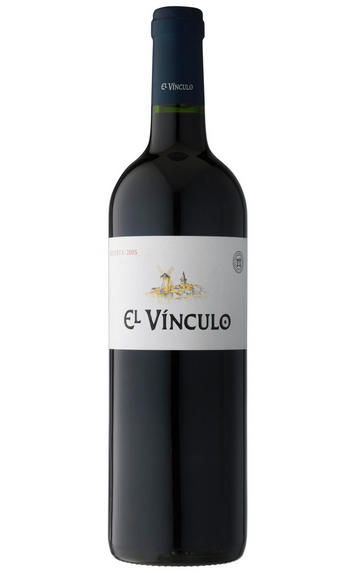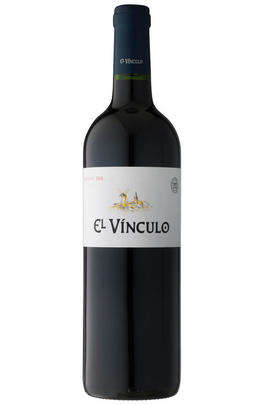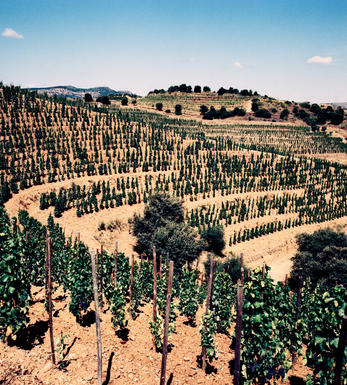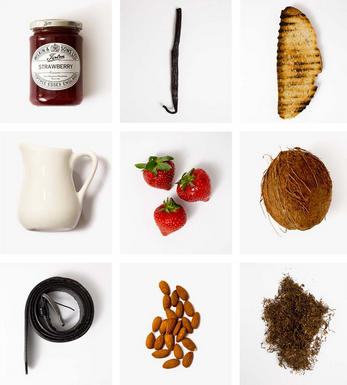
2005 El Vínculo Reserva, Bodegas Alejandro Fernández

Critics reviews
These wines demonstrate the potential of La Mancha, a large region known in the past primarily for bulk wines, but now increasingly the focus of top vignerons such as Alejandro Fernandez of Pesquera fame.
Jay Miller - Wine Advocate #176 - Apr 2008
About this WINE

La Mancha
The autonomous province of Castilla-La Mancha lies in central Spain, and is bordered by Castilla y León, Madrid, Aragon, Valencia, Murcia, Andalusia, and Extremadura. It is known as the setting for Don Quixote's Spanish novel.
Castilla-La Mancha is the powerhouse of the Spanish wine industry, producing almost half of Spain's vinous output, from a range of grape varieties: Albillo, Parellada, Torrontés, Moscatel, Merseguera, Pardilla, Macabeo (Viura), the local Malvar and the prolific Airén for easy-drinking, crisp, squeaky-clean whites. Tempranillo (locally known as Cencibel) Garnacha Tinta, the local Moravia, Cabernet Sauvignon, Merlot, Syrah, Monastrell are used principally for reds and rosado (rosé) wines.
Castilla-La Mancha incorporates the following DO appellations with various winemaking traditions and varying degrees of success: the heavyweights of La Mancha and Valdepeñas, and the lesser-known Almansa, Ribera del Júcar, Méntrida and Manchuela. Since the late 1990s, the local wine industry has progressed in leap and bounds to become a source of modern-styled, easy-drinking, excellent value for money wines.
La Mancha is the biggest wine region in Spain, producing over 700,000 hectoliters of wine annually. It occupies the southern portion of the Castilla-La Mancha region just south of Madrid, stretching between the Montes de Toledo and the western spurs of the Cerros de Cuenca.Since the early 1990s, wines from this arid, windswept, 600-metre-high plateau have left behind their (often literally) murky, bland and poor-quality past, and been reinvented as progressive, modern and good value. A driving force in La Mancha's remarkable transformation has been the involvement of wineries from Spain's finest wine regions, who have injected considerable amounts of money into the area. These pioneers include Ribera del Duero's Alejandro Fernández (El Vinculo), Martinez Bujanda (Finca Antigua) and the maverick owner of Marqués de Griñon, Carlos Falco, from Rioja, and the Jerez/Sherry behemoths Osborne and González Byass.
Wines range from fruity, approachable, value-for-money examples (often made in high volumes to individual specifications from supermarkets and large retailers) to top quality, expressive, serious wines made in small quantities, often using experimental techniques and bespoke varietal clones.
Wines range from fruity, approachable, value-for-money examples (often made in high volumes to individual specifications from supermarkets and large retailers) to top-quality, expressive, serious wines made in small quantities, often using experimental techniques and bespoke varietal clones.The reds are typically firm, ripe and fruity with a nice balance of toasty oak. They are made principally from Tempranillo (aka Cencibel), followed by Cabernet Sauvignon, Merlot, Syrah and Monastrell. The most common white varieties are Airén, Albillo, Macabeo, Merseguera and a little Sauvignon Blanc and Chardonnay. The whites show a wonderfully clean, modern character with subtle flavours and frequently offer excellent value.
Castilla-La Mancha is also home to Dominio de Valdepusa and Finca Élez, two of Spain's ‘private wine regions’, called Vinos de Pago DO (Denominación de Pago) that refer to single-estate wineries, each with their own rules and regulations. The classification of Pago was created in 2003 and bestows DO status on outstanding single estates, even if they are located outside an existing DO area.Recommended Producers: El Vinculo (Alejandro Fernández)

Tempranillo/Tinto Fino
A high quality red wine grape that is grown all over Spain except in the hot South - it is known as Tinto Fino in Ribera del Duero, Cencibel in La Mancha and Valdepenas and Ull de Llebre in Catalonia. Its spiritual home is in Rioja and Navarra where it constitutes around 70% of most red blends.
Tempranillo-based wines tend to have a spicy, herbal, tobacco-like character accompanied by ripe strawberry and red cherry fruits. It produces fresh, vibrantly fruit driven "jovenes" meant for drinking young. However Tempranillo really comes into its own when oak aged, as with the top Riojas where its flavours seem to harmonise perfectly with both French and American oak, producing rich, powerful and concentrated wines which can be extraordinarily long-lived.
In Ribera del Duero it generally sees less oak - the exception being Vega Sicilia where it is blended with Cabernet Sauvignon and Merlot and then aged for an astonishing 7 years in oak and is unquestionably one of the world`s greatest wines.


Buying options
Add to wishlist
Description
Alejandro Fernandez, the magus of Pesquera, has demonstrated that high quality vines can indeed be located in La Mancha. No need to tilt at windmills; enjoy instead ripe creamy fruit and a full-bodied well-structured palate.
Simon Field MW, BBR Buyer
The bad-lands of La Mancha are arid and forbidding in the extreme, whatever the season. Here we find the widely-planted Airén variety, a complete stranger to quality, and lots and lots of bulk wine. Here we prove that the noble Tempranillo can work in such a forbidding environment. The alchemy has involved meticulous husbandry in the winery, eighteen months in new American barrels and a dash of genius.
wine at a glance
Delivery and quality guarantee